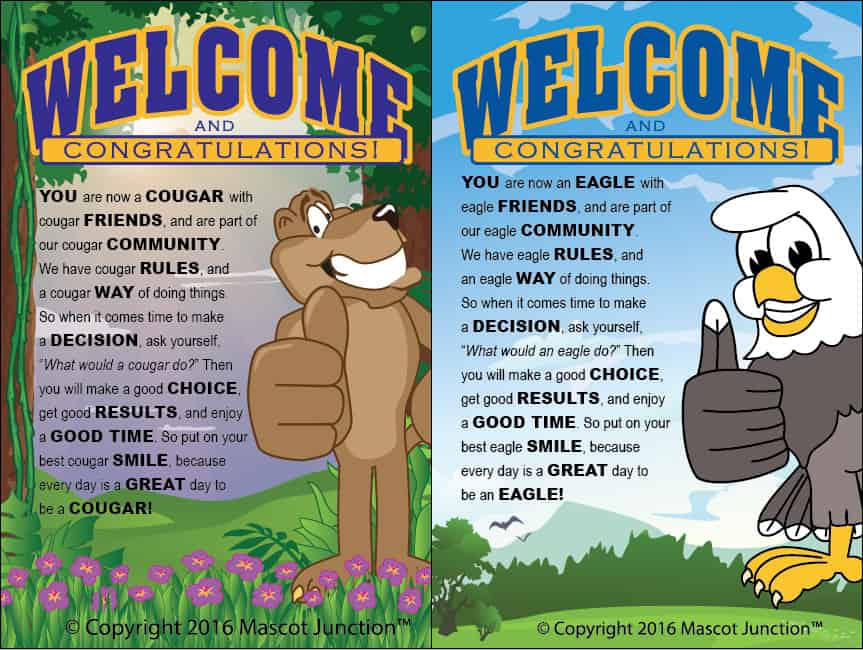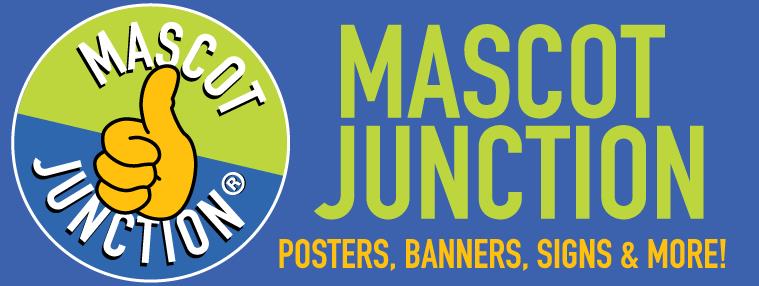
Welcome students with a message that tells them what it’s like to be part of your school’s community.
It means something when you tell a child “Congratulations, you are now a tiger. You are part of a tiger community and have tiger friends. We have tiger rules and a tiger way of doing things; and every day is a grrreat day to be a tiger! So whenever you have to make a decision, ask yourself ‘What would a tiger do?’ and look around because you are surrounded by examples of how tigers do things; and these things work! So put on your tiger smile and have fun! Every day is a grrreat day to be a tiger!”
This is the essence of what we mean by creating a mascot-centric climate for your school. It’s a way of life, a welcoming world full of positive examples. No matter what your mascot is, we can help you build a mascot-centric climate full of positive behavior examples that students whole-heartedly embrace, imitate and use to develop social skills to help them navigate through school, and life, with greater ease and success.
We are PBIS Teaching Tools, and we give schools what they need to create a mascot-centric climate, no matter what their mascot is. We have an image library of more than 7,000 mascot illustrations that took us more than 13 years to produce. Many of the illustrations feature the mascot demonstrating positive behavior and, in fact, are designed to support PBIS and similar programs. This image library enables us to design and produce a wide array of posters, banners, street signs, gotcha rewards and other visual aids to create a vibrant and engaging climate around your mascot.
An amazing thing happens when a child utters the words “I am a tiger.” It is a powerful affirmation that actually changes the child’s self image. They ARE a tiger. They self identify as a tiger. It becomes part of their persona and, more importantly, part of their self-image. Here’s the important part: It’s human nature to act consistently with one’s self-image. You may fight it, but ultimately, it’s gravitational pull will win. This presents an incredible opportunity for educators. Control the tiger, and you control (or influence) the child. This is why a school mascot is the perfect building block for constructing a cultural foundation that works. One that the children embrace and readily adopt.
I remember my first day of school like it was yesterday (even though it was 51 years ago. I had not gone to day care, so I entered straight out of our family home. I had virtually no idea what to expect. It was a big building, full of strangers. I didn’t know any of the kids. It was more intimidating than exciting. I knew I’d be expected to learn things like how to read and write and do math, but I didn’t have a clue how to do any of that, so I just didn’t see a clear path forward. It was with blind faith, and the understanding that I HAD to go, that I entered the school. It would have been so much nicer, and easier if, on the first day, my teacher had said “Welcome David. You are now a Leola Lion, and part of our lion community. Here you have lion friends, and we have lion rules, and a lion way of doing things. Here are the lion rules, and here are how lions act (behavior expectations). Every day is a great day to be a lion, so put on your best lion smiley face and have fun.”
I would have had a better sense of the social landscape. Being a lion is very visual and easy to understand. Being a “kindergartener at Leola Elementary School” didn’t bring forth a clear image of anything I had any association with. It was vague, and uninviting.
Kindergarten turned out to be wonderful anyway, but initially, it could have been better, easier, and I could have flourished socially with greater ease and success. I just remember being nervous, and not knowing what to do. Being a lion would have made me feel more part of the group faster.
Learn more about mascot-centric climate creation for schools at PBISteachingtools.com.
